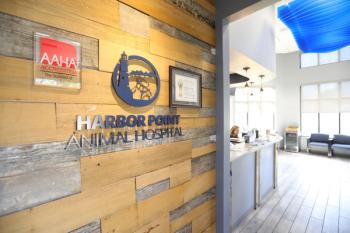
Bringing balance to your veterinary practices financial health
If you dont consider the balance sheet along with your income statement, you really have no idea if your business is healthy.
Shutterstock.comIf you're assessing the renal function of a cat with chronic kidney disease, a urinalysis alone isn't going to cut it. You need to evaluate the urinalysis alongside the results of a complete blood count and serum chemistry profile if you want to reach an accurate diagnosis.
It's the same when you're assessing the financial status of your veterinary practice. You've got to look at the practice income statement alongside the balance sheet to make a proper diagnosis of financial health. Unfortunately, many veterinary practice owners have been assessing their practice performance using only the urinalysis-or income statement-and as a result they've missed some critical information.
In 1998 I was asked to be part of a long-range facility committee for the school district in which I resided. The committee toured all the district facilities: six elementary schools, a middle school, a junior high school, two high schools, an administration building, a transportation building, a maintenance facility, and numerous athletic fields and assorted outbuildings. The school district had often indicated that it was financially sound because the board maintained a small reserve on the district's income statement and assessed taxes on the community at a low rate.
What we found on our tour told a completely different story. Roofs leaked, classrooms were crowded, equipment was outdated and grounds were in poor condition. In essence, the facilities and equipment in the district were in sorry shape, and it was clear that the income statement was in good shape only because physical assets had been neglected-an oversight that would have been caught with an accurate balance sheet. The long-range facility committee put together a plan that called for a prolonged campaign of improvement and expansion of the physical plant-an effort that would require a sixfold rate increase in the property tax assessment.
An overemphasis on profitability
The veterinary profession has long focused on profitability as a measure of a practice's financial health. While this factor certainly can't be discarded, it shouldn't be viewed in isolation. A veterinary practice, like any business, serves two financial functions. First, it produces a stream of income to provide for its workers and shareholders. Second, it is a store of wealth. Cash tends to flow between the two functions. When new equipment or new space is added to the existing physical clinic, cash moves from income to assets. When assets are not replaced or repaired during their use, cash flows from the assets (as they depreciate) to income.
Looking for a sample balance sheet? See the list of
As was the case with the school district, if you don't spend income to maintain or improve equipment and buildings, you'll get an inflated view of financial performance on your income statement. The opposite is also true. If you use income to purchase new equipment or buildings, your income statement will show lower profit and thus underestimate your financial performance; you're not considering the additional wealth that would be reflected on the balance sheet. Assessed together, the income statement and balance sheet offer a more complete picture of financial health.
On another occasion, I was asked to review a small manufacturing plant that had applied for a loan to expand operations. Company management was seeking $20 million, and the bank was ready to give the funds based on the business's gross sales of $6 million and nearly $2 million in profits. But this company had already invested nearly $50 million in its plant and equipment and thus was generating only 12 cents of sales for every dollar of assets and only 4 cents of profit per dollar of investment. At this rate the plant wouldn't be able to pay the interest on a new bank note with new sales. They had a very strong income statement and a healthy balance sheet. But the two together indicated a poor return on investment.
Making smart decisions
If you know the return being generated by your available assets, you can make better decisions about using capital to provide veterinary services. The long-run return in the U.S. stock market is about 7 percent annually. So if your return is less than this, you can decide if the benefits are worth the reduced return on investment. In agriculture, farmers often receive a return of 2 to 4 percent. They know this, but they're willing to give up the difference between their actual return and the obtainable return in the stock market to live and work in rural areas as their own boss.
Unlike the school district or manufacturing plant, many veterinary practice owners choose to separate the land and building or other physical assets from the practice for tax or liability purposes. Keep in mind that this tactic has little impact on the analysis of your practice's return on investment-the practice should be considered as a unit regardless of who owns the assets.
Balance sheets also help you determine your fixed costs associated with providing goods and services. These costs represent the use of physical resources to deliver services. You can use this share of revenue to plan for replacement or maintenance of the assets, which should be a part of your budgeting process.
Finally, while banks provide loans (or should) based on a business's ability to service the loan from profits, the bank also looks at the market value of assets to understand their exposure to loss should the business default on the loan and the bank be forced to liquidate the business to cover losses. Yet another reason not to neglect the balance sheet.
In summary: The balance sheet is an intricate resource for assessing your practice's financial health and should carry as much weight as any other component of your financial analysis. It provides critical information on asset depreciation and value, return on investment or assets, fixed costs and asset replacement, and leveraging decisions (bank loans). The veterinary profession must begin to prepare balance sheets, both at book value and fair market value, and ensure that those values reflect the true use of the assets rather than those dictated by the IRS for tax purposes. If you don't use a balance sheet, your assessment of your practice's financial health will be inaccurate and may even be misleading.
Dr. Michael Dicks is director of the AVMA's Veterinary Economics Division. Dr. Bridgette Bain is an analyst with the Veterinary Economics Division.
Newsletter
From exam room tips to practice management insights, get trusted veterinary news delivered straight to your inbox—subscribe to dvm360.






